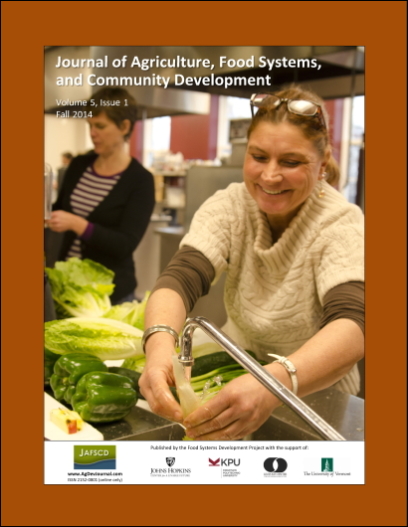Guest Editorial: Evaluation and the Local Foods Data Void
DOI:
https://doi.org/10.5304/jafscd.2014.051.007
Keywords:
Economic Impact, Local Food Data, USDA, Census of AgricultureAbstract
First paragraphs:
Local and regional food system professionals are obliged to rely on imperfect, incomplete, and evolving measures to track economic changes in the local food industry. These data are critical for informing decisions on how to invest limited resources to create optimal impacts. U.S. Department of Agriculture (USDA) Census of Agriculture figures indicate that direct food sales in the U.S. appeared to have increased from US$1.2 billion in 2007 to US$1.3 billion in 2012 — but when adjusted for inflation, sales actually remained steady. These figures, however, do not account for local food sales to institutions, restaurants, and retailers. The 2008 Agricultural Resource Management Survey (ARMS) partially addressed this gap by tracking local food sales from farmers to both individuals and "intermediated" markets such as restaurants and grocery stores. But the ARMS data did not include local food sales to institutions such as schools or hospitals, thus leaving another gap in the data.Data derived from various national sources indicate that local food systems may be growing, but the data collection methods are inconsistent and the results piecemeal (Hunt & Matteson, 2012). Moreover, the information is presented at a scale that often is irrelevant to local professionals serving constituents within a specific geographic region. The absence of locally relevant pre-existing data on local foods means that entities like local governments, community foundations, school administrators, and others are creating policies, programs, and investments that affect the local food sector without having basic information about its scope....
Metrics
Downloads
Published
How to Cite
Issue
Section
License
The copyright to all content published in JAFSCD belongs to the author(s). It is licensed as CC BY 4.0. This license determines how you may reprint, copy, distribute, or otherwise share JAFSCD content.













